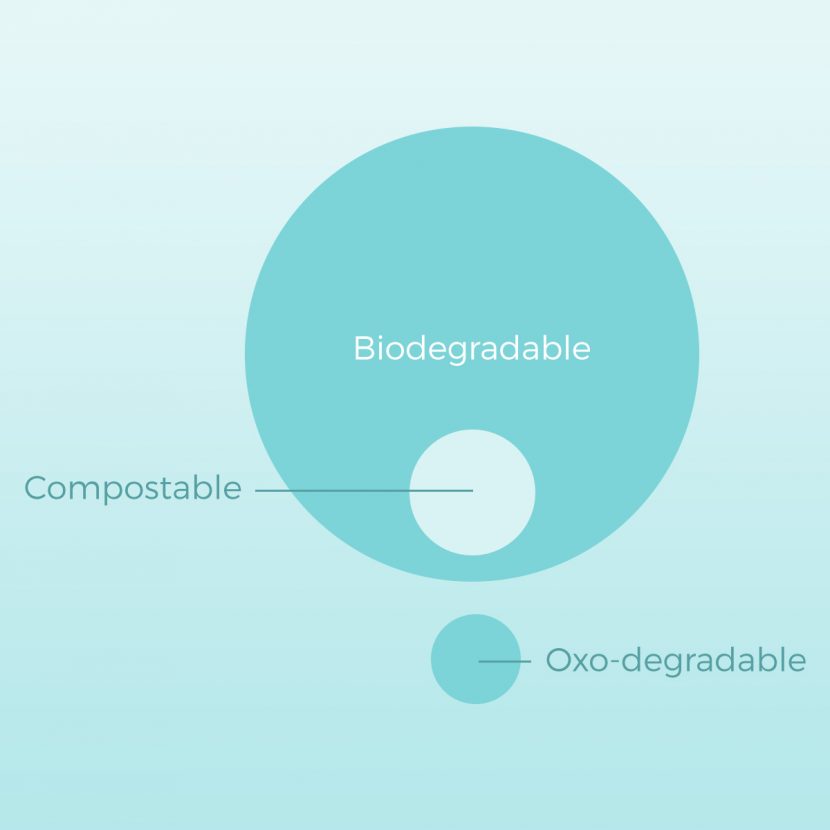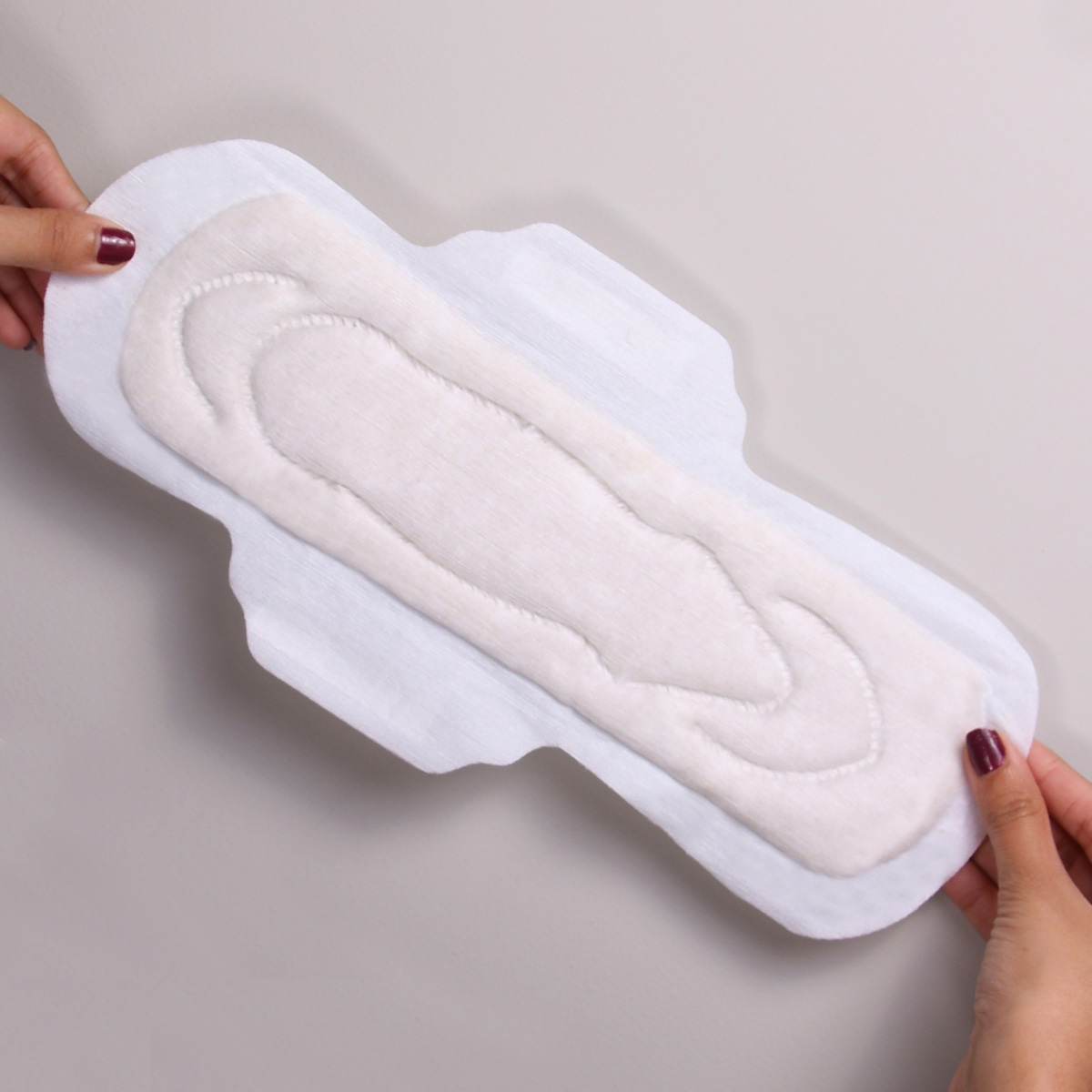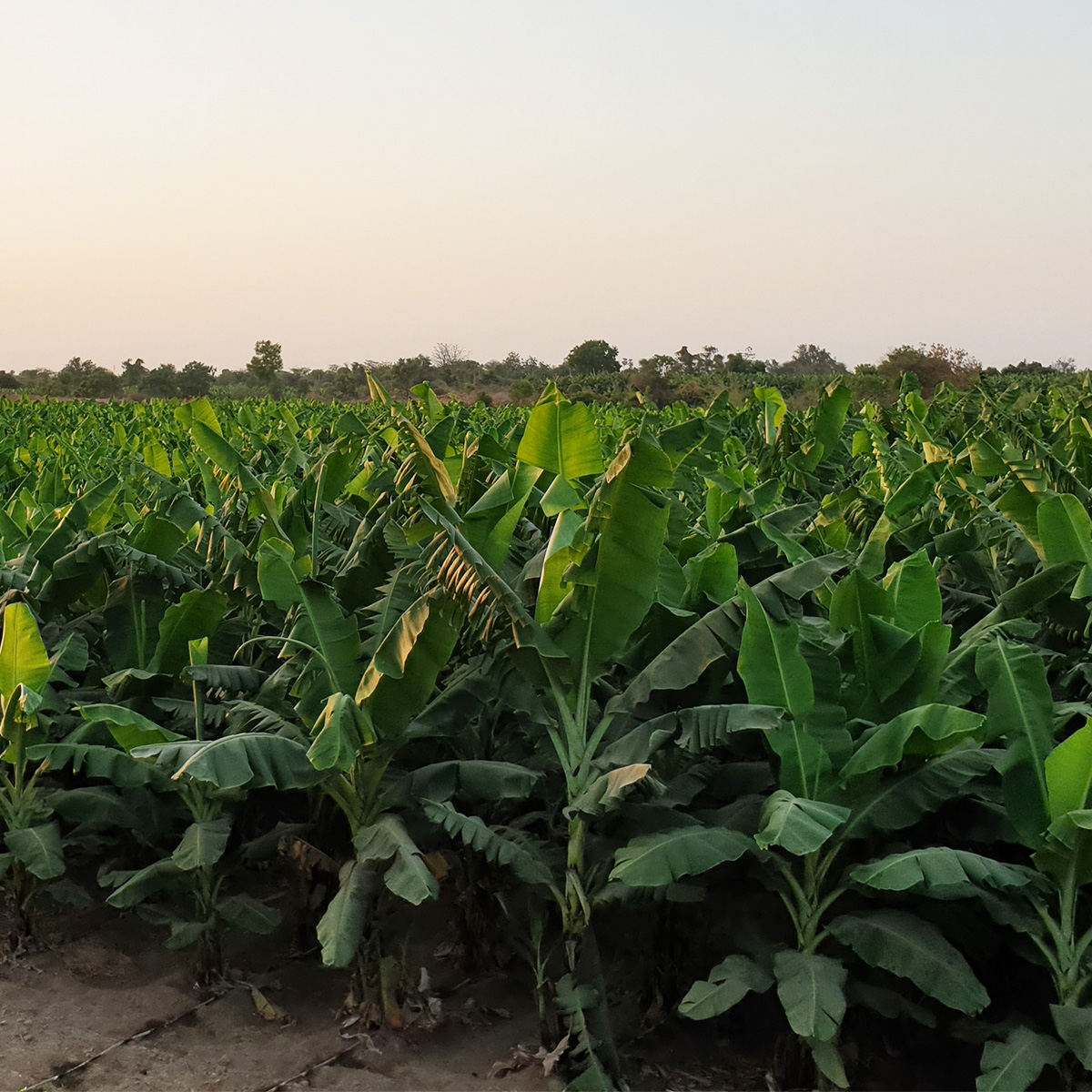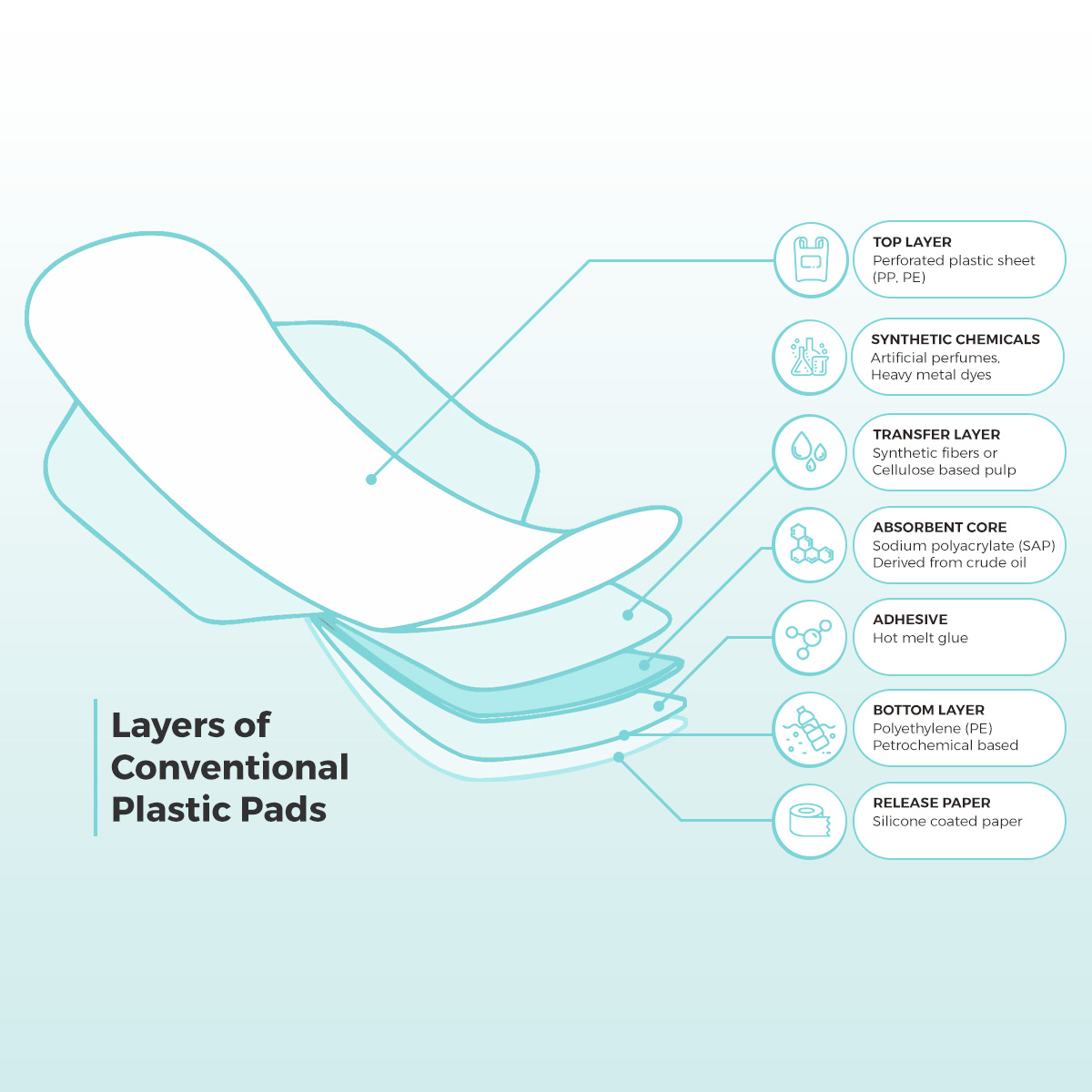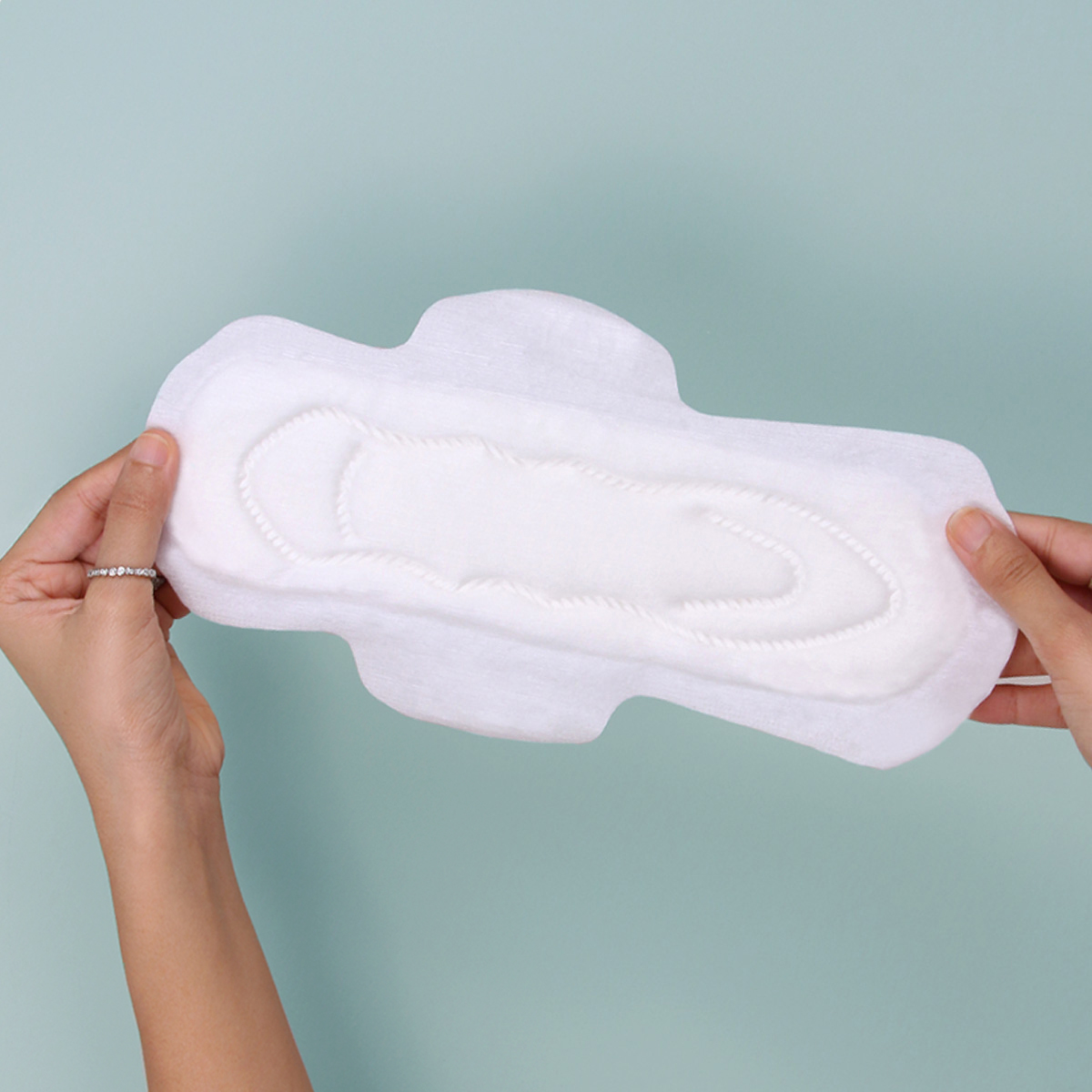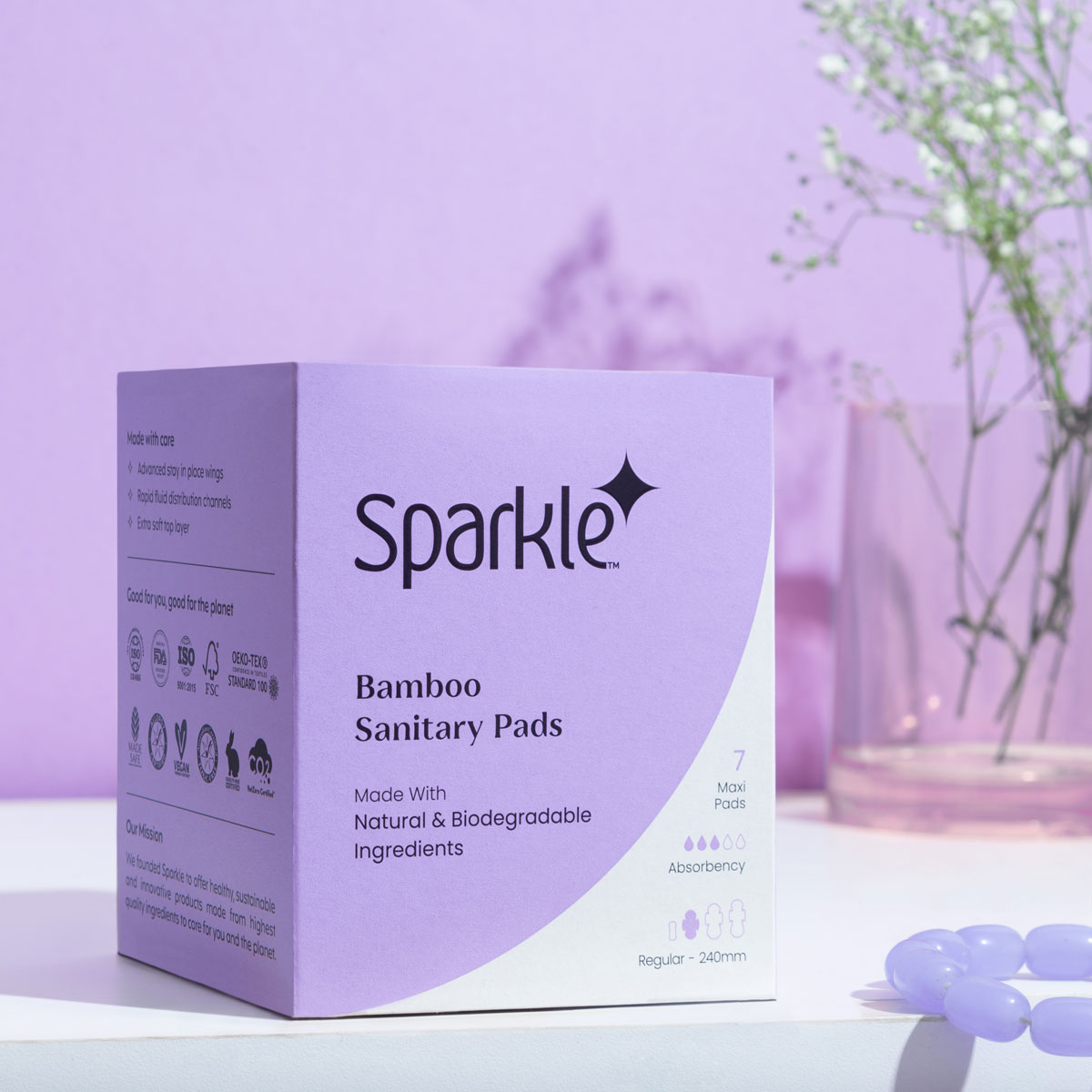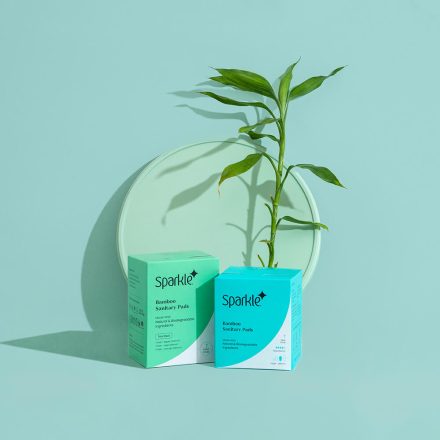Over the past few months, we have been getting a lot of questions regarding the biodegradability of sanitary pads, wrapping films, disposal bags and outer packaging materials.
So, as a brand that truly believes in full transparency, we have put together a simple guide that can help bring you more clarity as to the different ingredients we use to make our Sparkle pads. This guide will also point out the common misconceptions about biodegradable and compostable sanitary pads available in the market.
Before we get into the technicalities, let’s start with a quick quiz to test your knowledge about the sanitary pads you currently use:
- What is the difference between a biodegradable product and a compostable product?
- Are you sure that the sanitary pad you currently use is biodegradable or compostable?
- What types of plastic or other petrochemical byproducts are present in your sanitary pads, and what are their quantities?
- What is the correct way to dispose of a used sanitary pad?
- What happens to a soiled sanitary pad, after you throw it into a waste bin?
- How many years (or hundreds of years) does it take for a used sanitary pad to decompose after disposal?
By the time you complete reading this guide, you will have all the information you need to make an informed decision before your next purchase. You will also learn how to identify and interpret misleading buzzwords that are used by certain brands to trick you into buying something that may not really be as eco-friendly as you might have thought once.
To help you understand the concept of biodegradability and compostability better, especially in the context of sanitary pads, we have divided this guide into the following three parts:
- Part 1: Understanding Biodegradability And Compostability Of Different Materials
- Part 2: Synthetic Ingredients Used In Conventional Sanitary Pads And Their Sustainable Alternatives
- Part 3: Guidelines For Proper Disposal Of Soiled Sanitary Pads
Part 1: Understanding Biodegradability And Compostability Of Different Materials
Unfortunately, the terms ‘biodegradable’, ‘compostable’, ‘oxo-degradable’ and many such others are frequently misused in marketing and advertising to sell products that may not entirely be eco-friendly. Although these terms are often used interchangeably, they are not synonymous.
To get clarity on the exact differences between biodegradability and compostability, let’s understand how we utilize different plant-based, animal-based or natural mineral-based resources, while transforming their inherent properties to develop value-added products that we use in our day-to-day lives.
What Comes From Nature Eventually Goes Back Into Nature
Everything created by nature will eventually degrade into basic building blocks that will in turn, constitute nature itself. Even raw crude oil will eventually breakdown when exposed to water, air and salts, if given enough time.
If the material is in its relatively natural form, it can easily break down into natural elements, carbon dioxide, and water vapour by organisms like bacteria and fungi. However, if the material is synthesised in a lab from element combinations that do not exist in nature, there may not be corresponding micro-organisms that can break them down. For example, products made from man-made petrochemical compounds are altered in such a way that they are unrecognisable to microorganisms and enzymes that return natural materials to their basic building blocks. Therefore, plastic as well will not break down back into the petroleum from which it is created.
What does the term ‘biodegradable’ mean?
The term ‘biodegradable’ has no legal definition which can be used to clearly differentiate between materials that fall either under the category of biodegradable or non-biodegradable.
According to European Bioplastics, “Biodegradation is a chemical process during which microorganisms that are available in the environment convert materials into natural substances such as water, carbon dioxide, and compost (artificial additives are not needed). The process of biodegradation depends on the surrounding environmental conditions (e.g. location or temperature), on the material and the application.”
In other words, if something is biodegradable, it simply means that it will break down over some time. Biodegradability is a very vague term since it does not define the length of time needed for products to decompose.
Technically, just about everything can be called ‘biodegradable’, although it may take hundreds and thousands of years for items to biodegrade.
According to an Ohio State professor, Frederick Michel, Polyethylene (PE), the most widely used plastic, technically biodegrades 0.1% every ten years if present under the soil. Dr Michel points out, “Is it therefore biodegradable? Probably not.”
Some companies are quite straightforward with their objective – they make specific claims about the timeframe and the environmental conditions under which their products can biodegrade instead of simply claiming the tag of “biodegradability” without establishing further context. Materials that take a long time to biodegrade or have a very poor degradation rate are often referred to as ‘non-biodegradable‘.
As a smart consumer, you should ask yourself the following questions whenever you purchase a ‘biodegradable’ product:
- Is the material relatively in its natural form, or has it been synthesised in a lab from combinations of elements that do not exist in nature?
- How long does it take for the material to actually break down?
- Are there any contaminants or toxic substances left behind during the degradation process?
It is also important to note that it may take longer for items to biodegrade in landfills where the light, temperature and bacterial activities required for degradation are not at the optimal level. For example, even relatively natural materials such as orange or banana peels may also take around a year to biodegrade in landfills.
In most cases, it is the temperature and the level of microbial activity, which determines the rate and level of biodegradation.
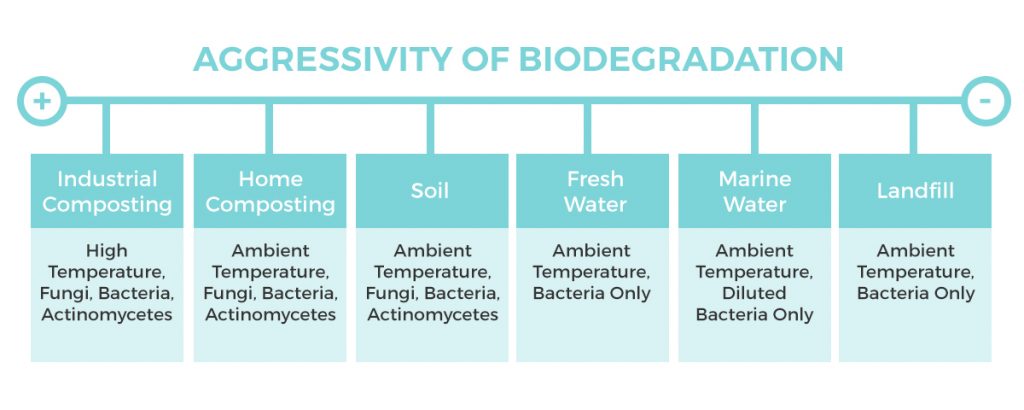
What does the term “compostable” mean?
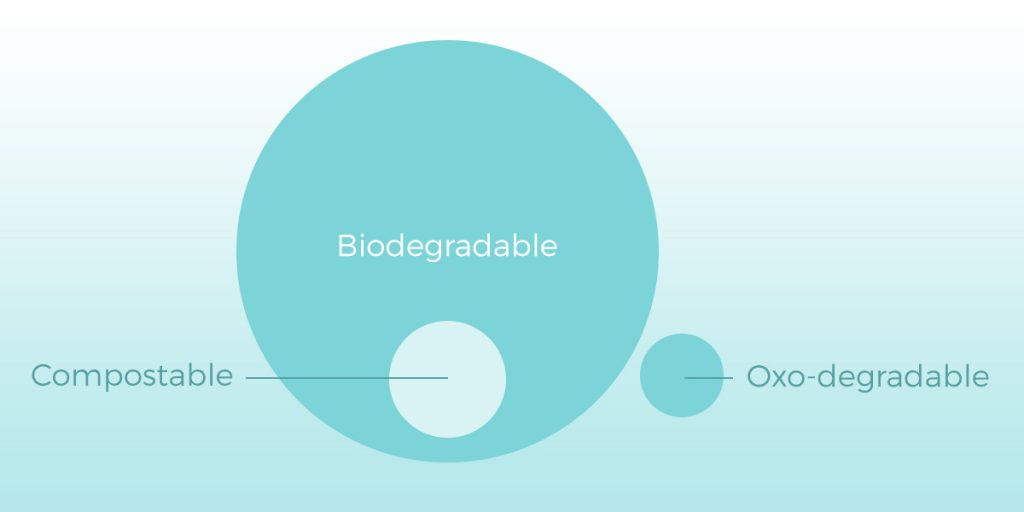
Compostable materials (a subset of biodegradable materials) are made from natural materials that can decompose fully into ‘compost’ without producing visible, distinguishable, or toxic residue in a specific timeframe under certain conditions.
However, to be classified as ‘compostable’, products must meet all the requirements defined by globally accepted standards such as the European Standard EN 13432 or the US Standard ASTM D6400.
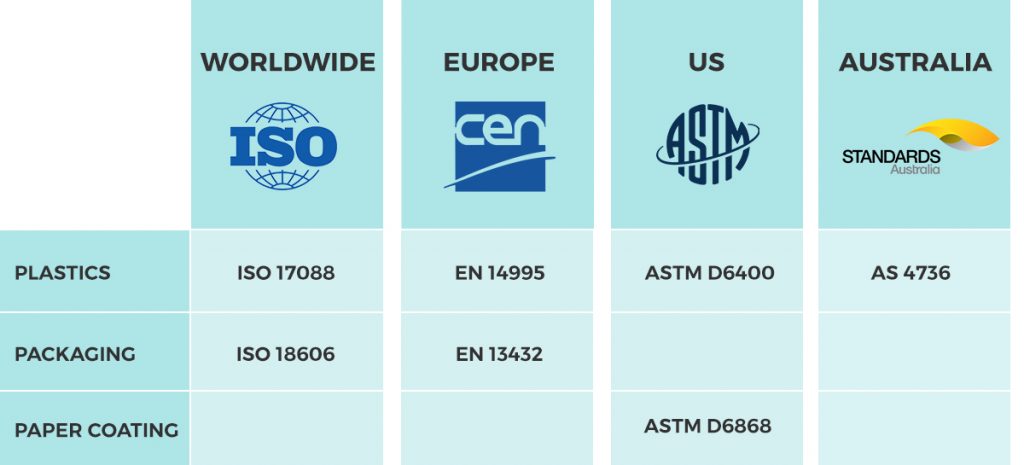
Here is a brief summary of the EN 13432 requirements for ‘compostable’ products:
- Biodegradation of 90% of the materials should occur in a commercial composting unit within 180 days.
- No more than 10% of material fragments should be larger than 2mm after 12 weeks.
- Leftover compost should be free of toxins.
- There should not be any adverse impacts on the ability of the compost to support plant growth.
Compostable materials are also biodegradable, but biodegradable materials may not be compostable.
It is also important to note that composting is a controlled process that usually happens in an industrial composting facility. Not all compostable materials are suitable for home composting unless the product has been certified as ‘home compostable’.
At an industrial compost facility, a temperature of around 60C is maintained in the presence of certain microorganisms for a duration of 90 days to create compost which can be repurposed for agriculture. Home backyard composting, on the other hand, refers to the cooler aerobic breakdown of organic matter at atmospheric temperatures.
As a smart consumer, it is essential for you to get yourself familiarised with some of the logos provided by global agencies for compostable products:
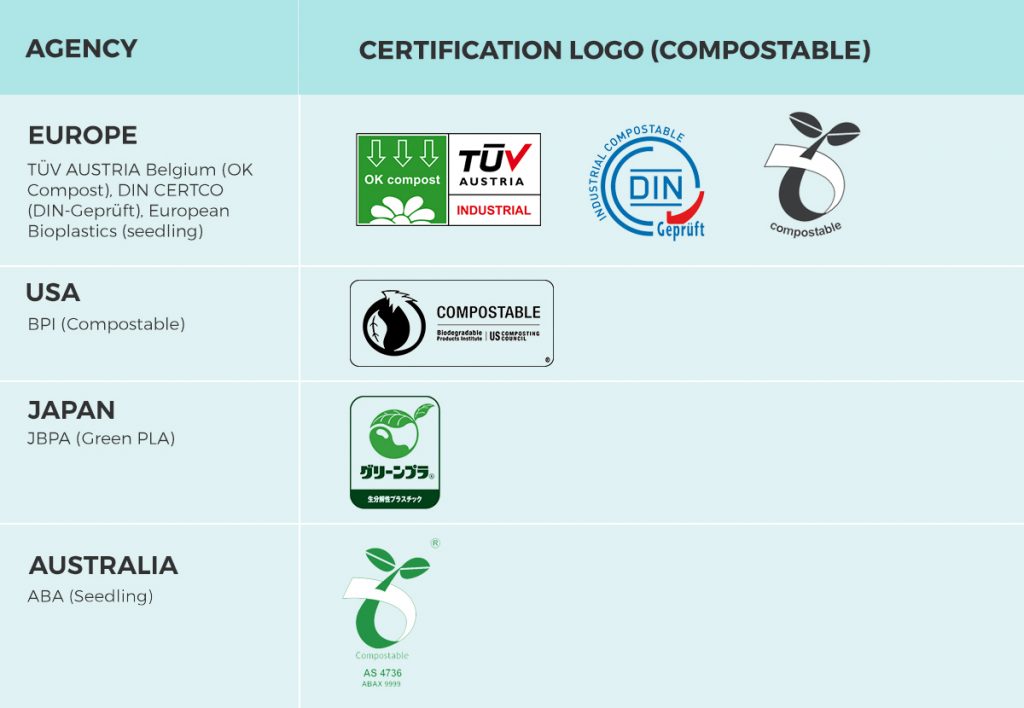
Besides the terms ‘biodegradable’ and ‘compostable’, there are a few other terms that are often misinterpreted.
Bio-based: A term often used to define organic materials in which the carbon comes from contemporary (non-fossil) biological sources such as corn, cereals, sugar beets, cassava or sugarcane crops.
Oxo-degradable: A conventional petroleum-based plastic mixed with an additive in order to imitate biodegradation. Oxo-degradable plastics break down into smaller and smaller pieces, also known as microplastics. However, they do not break down at the molecular or polymer level. In other words, microplastics remain unchanged in the environment for hundreds of years.
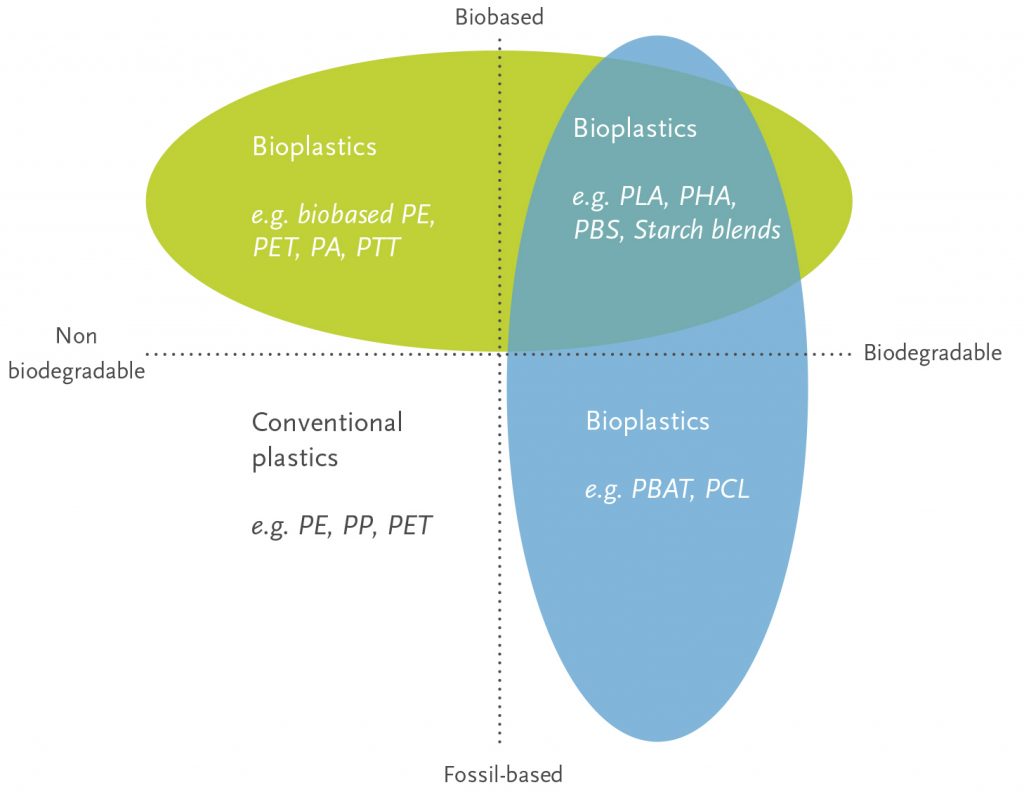
Source: European Bioplastics
What does the term ‘organic’ mean?
Brands that claim that their products are made with 100% organic materials should honestly and transparently disclose the traceability and certifications for the organic ingredients used in their products.
As an intelligent consumer, you should look for the following logos provided by global agencies for certifying organic products before making an informed purchase-oriented decision.
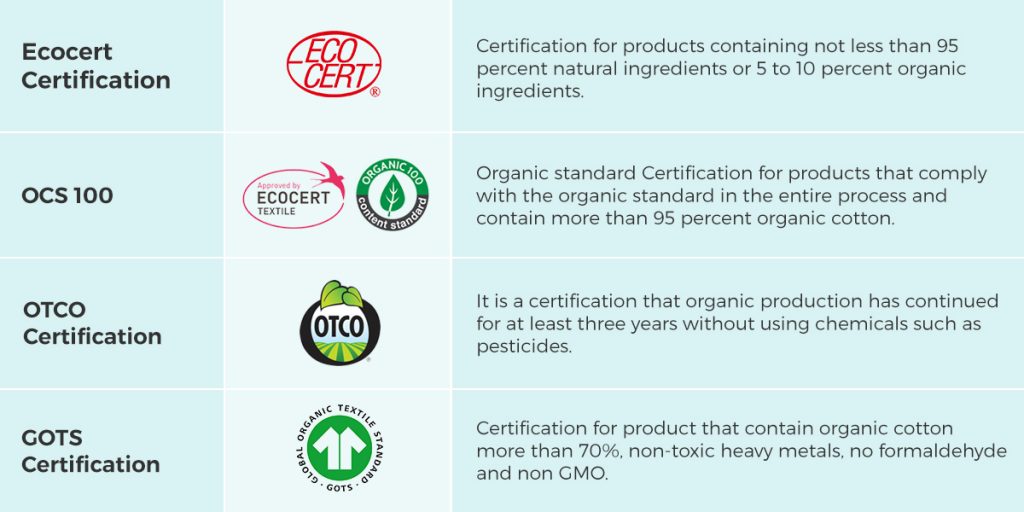
To better understand the concept of biodegradability and compostability, especially in the context of sanitary pads, please read the information given below:
Part 2: Synthetic Ingredients Used In Conventional Sanitary Pads And Their Sustainable Alternatives
